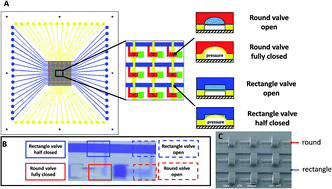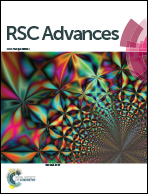Digital microfluidic programmable stencil (dMPS) for protein and cell patterning†
Abstract
Patterning biomolecules and cells on substrates is usually a prerequisite for biological analysis and cell studies. A stencil is a versatile tool for sample patterning owing to its reusability and easy operation but it lacks addressable fluid control and programmable change of pattern. Here, we combined the advantages of a microfluidic chip and stencil to design a digitally controlled microfluidic programmable stencil. The key design is automatic passive matrix addressing based on combined application of two types of elastomeric valves. These two valves have distinct actuation thresholds, typically 13.4 psi for a round valve and much higher than 13.4 psi for a rectangle valve. Different types of protein and cell pattern on a 2D substrate could be obtained by controlling the fluid addressing code based on the passive matrix addressing method. An automatic microsampler was also applied to facilitate fast sample selection and introduction in the patterning process. A successful protein and cell pattern was obtained which could be used for downstream analysis and study.



 Please wait while we load your content...
Please wait while we load your content...